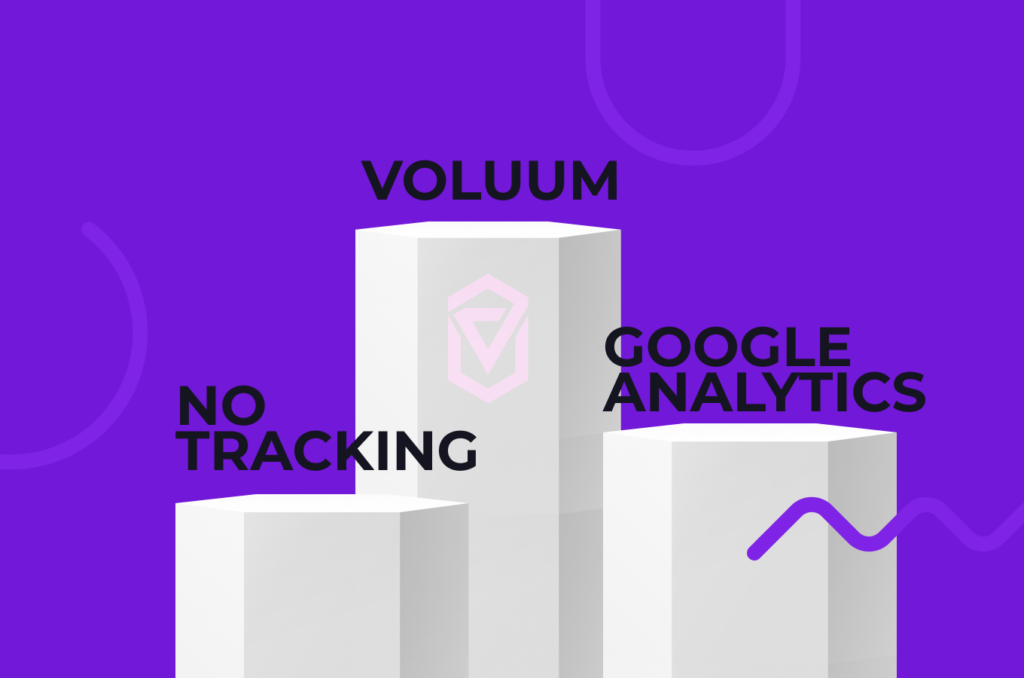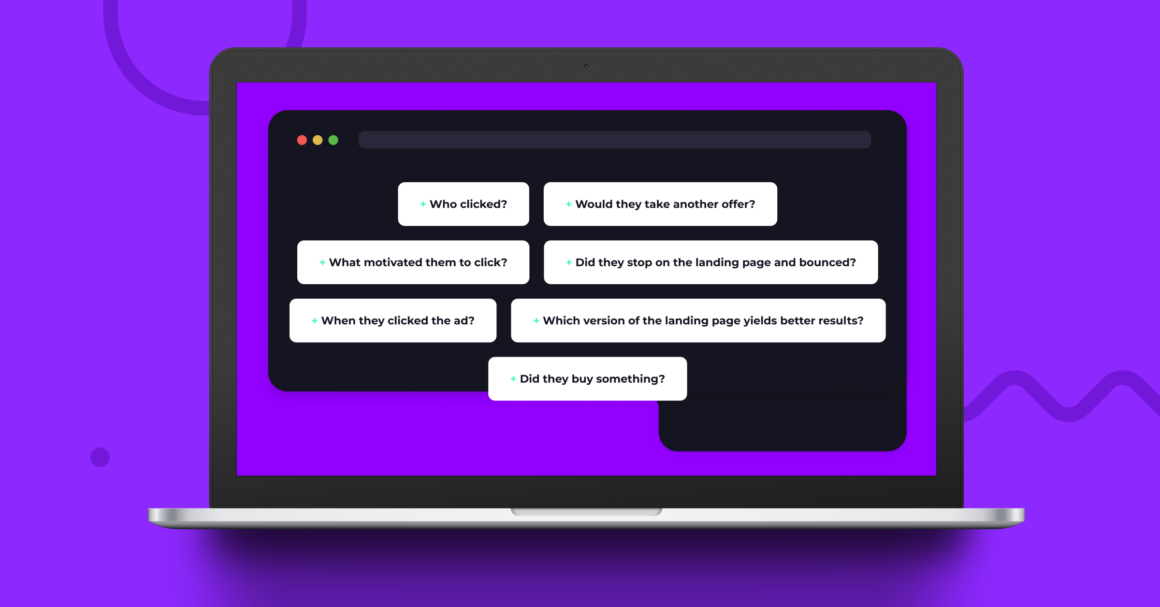Virtually any form of online presence (ads, websites, apps) is being tracked and analyzed for better performance, user experience, or even out of pure curiosity. However, native ads tracking is a different beast. Native ads have varied but concrete goals. Tracking such ads needs to follow some rules to deliver expected outcomes to advertisers.
In other words, you need to do it right using the right tools. Otherwise, tracking will be just an art for art’s sake.
So, why is native ad tracking different from tracking emails? How to track your native ads campaigns properly? How to analyze recorded data? Read the article below to get answers!
The Case of Native Ads Tracking
The motives behind native ad campaigns are varied. This is because native ads are great at conveying messages that slip through visitors’ guards using the trust and credibility of a website they are placed in. Moreover, because native ads resemble editorial pieces, you can put a lot of content for a visitor to read – contrary to what is recommended for display ads, for example.
Different goals aside, everything needs to be measured. If you are not measuring anything, you are doing it wrong, sir (or madam).
Why? Apart from curiosity? The answer is simple: optimization potential.
Native ads work best at a sweet spot where they blend enough to not be seen as intrusive ads but stand out just enough to be seen. And you will only know that you’ve reached this point if any of your further efforts (rewriting content, changing creatives, updating headlines, tuning traffic targeting options on paid ads) bring any additional performance increase.
Goals
These are the goals behind native ads marketing campaigns:
- Brand awareness
- Purchases
- App installs
While other ad formats usually try to sell you something or gather leads, native is often used for promoting your brand without any concrete (and measurable) outcome in mind. Sometimes ads are just to remind you that a given brand exists. You simply need to know that Coca-Cola exists and it is sweet, in case you have forgotten.

This results in a different tracking philosophy, which in the case of other ad formats is based on conversions. And how do you accurately measure conversions in brand awareness campaigns? You measure different things; mainly how many people have seen or interacted with your ad campaign. This should give you a rough idea of how successful your campaign was.
That’s why native ad campaigns rely on the following metrics.
Metrics
The most important metrics you can measure in native ad campaigns are:
- CTR – this metric generally tells you how good your landing page is. CTR is a clickthrough rate, so a ratio of people visiting your page to people clicking the CTA button. The higher it is, the more people click further.
- CPM – this measures how many people have seen your ad. CPM is a cost model where an advertiser pays for 1,000 ad views (impressions), no matter if anyone clicked the ad or not. CPM is commonly used in brand awareness campaigns since they are all about exposure.
- CR – Conversion rate is the most universal metric across all advertising types. It tells you how good an offer is. It’s a ratio of people who clicked an ad to people that made a purchase.
- Bounce rate – This is the metric that describes how many people have left your website without clicking further as a ratio to the total number of people that have visited a website.
In order to record these metrics, you need to record visitor-generated events first. We talk about how to do this below, but first, let’s talk about where native ads can even appear.
Channels
When marketers talk about native ads, they often mean different advertising channels. For some, native ads are social ads because they resemble user posts. For others, native ads are content recommendation widgets on news outlets’ websites. Lastly, for some, the pinnacle of native advertising is influencer ads since it is almost impossible to tell them apart from regular content. And in some cases, such posts or videos aren’t even marked as ads.
How to Track Native Ads
Native ads tracking often depends on the channel. Big platforms such as Facebook or Google have their own tracking ecosystem, which is fine for some cases. If you don’t want to dig into numbers too deeply or do some actual A/B testing, it may be enough.
You may also choose an obvious road and use Google Analytics for native ads tracking. But, depending on the scale, this may be huge overkill. Plus, Google Analytics has its problems too.
Google Analytics doesn’t allow marketers to rotate campaign destinations. This means no A/B testing, a crucial aspect of native ads optimization.
A/B testing is the core of doing native ads business. With so much content, there’s plenty of room to optimize, cater to different audiences, tune your messaging, and so on.
For that, a marketer needs a dedicated native ad tracker such as Voluum.

The Tech Behind Native Ads Tracking
While most big platforms rely solely on pixel technology (small pieces of code embedded in a web page’s code that report users’ activity), Voluum offers pixel and redirects for tracking purposes. The latter technique trumps pixels because it enables A/B testing of landing pages.
With redirects, a user after clicking an ad is directed through a tracking domain to set destination. And this destination may be switched dynamically by an ad tracker. This is not possible with pixels, where users go directly to the destination, and the visit is reported AFTER the page is reached and loaded.
It has to be noted that redirects are banned by the likes of Google and Facebook – the platforms want to know where their users are taken, so a journey from an ad to a destination page needs to be direct.
Recording Data
Voluum records ad views, clicks on an ad, clicks on a CTA button on a landing page, and a conversion. For recording conversions, Voluum supports conversion tracking pixels and postbacks. It can also pass conversion data back to the original platforms, like Facebook or Google, even if the said data was recorded with postbacks, which are not supported by both platforms natively.
From this user data, the metrics mentioned above, and more are calculated and can be viewed in detailed reports.
Analyzing Data
There are various schools of thought when it comes to data analysis, and this is the area where pros truly excel and surpass newbies.
With native ads, the best metric to focus on is CTR. It brings results faster than any metric that uses conversions and is a good indicator of the conversion rate. Poor landing pages usually don’t coexist with high conversion numbers, so in most cases, low CTR equals low CR.
In brand awareness campaigns, CTR is the only engagement metric available. The other metrics that could be used to show the eventual success of a brand awareness campaign are impression-based. iCTR is a metric that describes the ratio of people seeing an ad to people clicking it.
When analyzing, you want to start big. When you have more than one landing page or an offer in your campaign, check the profitability and stop the ones that didn’t bring any (or minimal) revenue. Look at ROI: if an offer didn’t break even after the testing period (at least two days), stop it now.
You will be left with potentially profitable elements that still require some work.
Use Voluum’s grouping and drill-down options to delve into placement data. A placement is a specific location where an ad is displayed. A single web page can have several placements that differ significantly in terms of profitability. Your task is to identify those that aren’t profitable. Utilize filtering options to display placements with low CTR, copy the names, and submit such a blacklist to your traffic source (if it provides this option).
Of course, if you’re a busy person, you could assign Voluum to do it for you. It comes with an automation feature that can initiate predefined actions when specified conditions are met. For instance, it can add a placement to a blacklist if the CTR falls below 2%.

Automizer – Voluum’s automation tool – can then enforce this blacklist and suspend traffic to placements from this list, even if your traffic source doesn’t support it. Or you can even run a whitelist campaign – a campaign based solely on proven profitable placements. That’s not what most ad networks offer to advertisers.
We’ve covered the most intriguing rules you can set for your Voluum campaigns, and what’s more, Voluum has a library of rules for various ad types and cases.
Even if you eliminate unprofitable portions of your campaign, you still need to ensure that you can’t do things better. Perhaps your ROI would increase with a slightly better landing page? Or if you segment your audience and prepare multiple landing page variations for different languages spoken in the country you are targeting?
The answer can only be determined after you put your idea to the test and examine the data.
One additional note: whatever you do to optimize your campaign will only optimize it for a given moment in time. Traffic fluctuates, people grow weary of seeing the same ad, someone launches a more successful campaign that targets your demographic. The ultimate argument for testing is to stay ahead of the curve, ride the waves instead of being engulfed by them. If you continue testing different approaches even with a small portion of traffic, you will be prepared when the main campaign loses traction.
Final Advice for Coca-Cola
If you need more persuasion about the importance of tracking, know that this article is also tracked. We monitor the number of readers and bounce rate because we aim to deliver the best and most useful content.
Really, everyone tracks – especially in native advertising.
Without tracking and a proper analytics solution, you’re essentially squandering money in ad networks. You might argue that outdoor media is not tracked but is still prevalent, and you would be correct. But have you checked the cost of a single banner? Let me rephrase the question: are you Coca-Cola? If so, you can invest in outdoor advertising, run native ads campaigns without assessing their profitability, and people will still recognize the taste of your sweet beverage.
If you are not Coca-Cola, you need to track. You can’t afford to be without a tracker.






